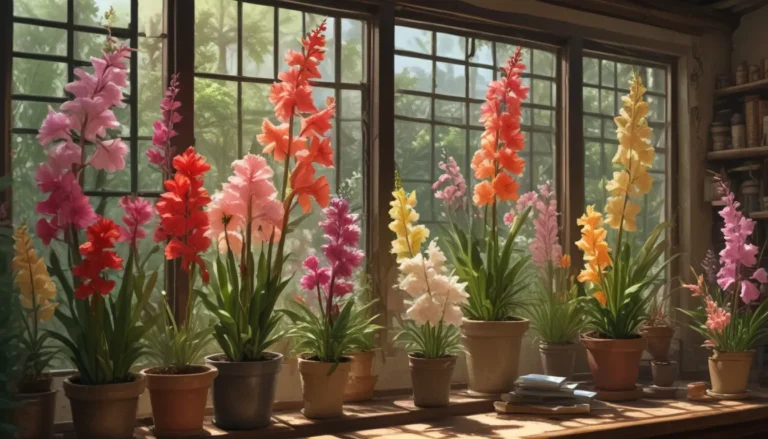How to Cultivate and Care for Purple Fountain Grass

Your Guide to Pennisetum x advena ‘Rubrum’
If you’re looking to add a touch of charm to your landscape, purple fountain grass is a stunning choice. With its deep purple leaves and vibrant flower spikes, this ornamental grass can make a bold statement in your garden.
Sadly, this beauty is short-lived for most in the United States, as it thrives in Zones 9 to 11 and is often grown as an annual in cooler regions. However, with the right care and attention, you can enjoy its beauty for a summer season.
Let’s dive into the world of purple fountain grass and discover how to plant, grow, and care for this eye-catching plant.
What You’ll Discover
- Cultivation and History of Purple Fountain Grass
- Different Ways to Propagate
- How to Successfully Grow Purple Fountain Grass
- Valuable Growing Tips
- Easy Pruning and Maintenance
- Where to Source Purple Fountain Grass
- Managing Pests and Diseases
- Best Uses for Purple Fountain Grass
- Quick Reference Growing Guide for Easy Maintenance
Before we dig in, let’s have a little fun with nomenclature. Purple fountain grass, also known as Pennisetum setaceum ‘Rubrum’, is most likely a hybrid between P. setaceum and P. macrostachys. Therefore, it goes by the name Pennisetum x advena ‘Rubrum’. But no need to stress, just a little plant trivia to impress your friends!
Cultivation and History of Purple Fountain Grass
Native to South and East Africa, southwestern Asia, and the Arabian Peninsula, fountain grass has made its way to various parts of the world. While some species can be invasive, ‘Rubrum’ cultivars are safe bets for ornamental use due to their sterility.
Propagation Made Simple
Due to its sterility, growing purple fountain grass from seeds isn’t an option. Instead, purchase a plant from a nursery or divide an existing plant to propagate new ones. So if you spot a lovely fountain grass in your neighbor’s yard, maybe a little friendly division is in order!
How to Successfully Grow Purple Fountain Grass
To help your ‘Rubrum’ thrive, plant it in a sunny spot and water generously during its initial growth stage. Once established, this drought-tolerant plant can do without frequent watering. Fertilizing monthly during the growing season is optional, as these hardy grasses can flourish without additional nutritional support.
Valuable Growing Tips
- Bright, direct sunlight is essential for optimal growth.
- Water generously during the early stages of growth.
- Fertilize monthly if desired.
Pruning and Maintenance Made Easy
In regions where purple fountain grass maintains its color year-round, a late winter or early spring pruning will encourage fresh growth. Be cautious when pruning as the leaves can be sharp. Remember to protect your hands and arms while working with this plant.
Where to Source Purple Fountain Grass
You can find ‘Rubrum’ at various nurseries and online sources, like Nature Hills Nursery. A quart-size container should get you started on cultivating this eye-catching grass in your garden.
Managing Pests and Diseases
Enjoy some peace of mind with ‘Rubrum’ as it is generally resistant to pests and diseases. However, rust can be a concern, especially in warm and wet conditions. Keep an eye out for small yellow spots that develop into rusty raised areas on the leaves. If rust appears, consider applying a fungicidal spray to combat it.
Best Uses for Purple Fountain Grass
The versatility of purple fountain grass makes it a welcome addition to any landscape. Use it as a standalone specimen or create a lavish display by planting it in groups. Some gardeners love incorporating it in borders or using it to add flair to container gardens. Don’t forget about its lovely plumes, which can enhance floral arrangements with a touch of drama (just remember to use a sealant to keep them intact!)
Quick Reference Growing Guide
- Plant Type: Ornamental grass, herbaceous annual, tender perennial
- Foliage Color: Black, purple, red, pink
- Native to: South and East Africa, southwestern Asia, and the Arabian Peninsula
- Hardiness (USDA Zone): 9-11
- Maintenance: Minimal
- Exposure: Full to part sun
- Spacing: 5 feet
- Height: 2-4 feet
- Spread: 2-3 feet
- Water Needs: Low to moderate
- Best Uses: Specimen, mass planting, borders, containers, cutting
- Attracts: Birds
Enjoy the Beauty of Purple Fountain Grass
While purple fountain grass may not be a perennial in all regions, its easy maintenance and stunning aesthetics make it a valuable addition to any garden. Whether you choose to grow it in a container or directly in your yard, this ornamental grass is sure to captivate with its rich colors and elegant plumes.
Share your purple fountain grass experiences in the comments below! Do you prefer it as an annual or perennial? Have you tried growing it in a pot? We’d love to hear your stories.
For more helpful landscaping tips and inspiration, explore these additional guides:
– Easy Landscaping with Ornamental Grasses
– The 19 Best Perennials for Late Summer Color
– The 15 Best Annuals for Late Summer Color
Remember, the beauty of purple fountain grass is a joy to behold, whether as a seasonal delight or a perennial favorite in your garden.





